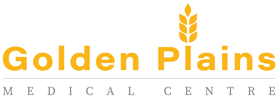Platelet Rich Plasma Treatment
Platelet Rich Plasma Treatment
What are the Purposes of PRP Injections?
Researchers are trying out PRP injections across a number of applications. Examples of these include:
- Hair loss: Doctors have injected PRP into the scalp to promote hair growth and prevent hair loss. According to research from 2014, PRP injections are effective in treating androgenic alopecia, also known as male pattern baldness.
How Do You Prepare for PRP Injections?
There are few steps to preparing for PRP injections. These steps depend on how you receive PRP.
PRP can be injected in different ways. For example, sometimes a topical numbing lidocaine solution is applied to your scalp before injection. You may have to arrive early to a treatment session if this is the case.
Other times, a local anesthetic is mixed with the PRP to reduce any discomfort. Sometimes, your doctor will inject or apply PRP during surgery. In this instance, preparation for PRP injections would involve following your surgeon's recommendations before surgery.
PRP Injection Process
Here's what to expect from a typical PRP injection process:
- A healthcare professional will draw a sample of your blood. The amount of the sample depends on where the PRP will be injected.
- The blood is placed into a centrifuge. This machine spins around very quickly, causing the blood components to separate. The separation process takes about 15 minutes.
- A technologist takes the separated plasma and prepares it for injection into the affected area.
According to the American Academy of Orthopaedic Surgeons, very few insurance plans will provide any reimbursement for PRP injections. The costs must largely be paid out of pocket. The costs can also vary by location and on how the injections are used. Some reported costs nationwide include:
- In 2013, ABC News 7 in San Francisco reported that PRP treatments for hair loss cost $900 for one treatment and $2,500 for a set of three treatments.
- The Washington Post mentioned in 2014 that knee injections of PRP can cost anywhere from $500 to $1,200 per treatment.
Insurance companies consider PRP an experimental treatment. More scientific research will have to conclude its effectiveness before it is more widely covered.
What are the Potential Side Effects of PRP?
Because PRP involves injecting a substance into the skin, there are potential side effects.
PRP is autologous, which means it contains substances that come directly from your own body. This reduces the risks for an allergic reaction that can occur from injecting other medications, such as cortisone or hyaluronic acid. However, there are risks from the injection itself, including:
- Infection
- Nerve injuries
- Pain at the injection site
- Tissue damage
You should discuss these potential risks with your doctor, as well as the steps they will take to minimize these risks.
What is the Recovery Time for PRP Injections?
When PRP is injected after an injury, your doctor may recommend that you rest the affected area. However, these recommendations are more related to the injury and less to the PRP injections. Most people can continue their daily activities following PRP injections.
Because PRP injections are intended to promote healing or growth, you may not notice an immediate difference after receiving the injections. However, in several weeks or months, the area may begin healing faster or growing more hair than you would have expected if you hadn’t received PRP injections.

